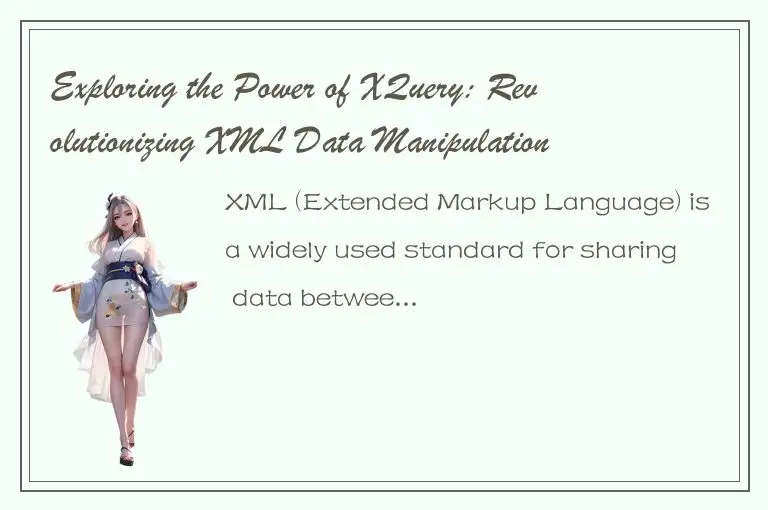XML (Extended Markup Language) is a widely used standard for sharing data between applications and systems. It provides a structured and standardized way to arrange and present data. As a result, it has become an essential part of modern-day data processing and management. However, handling and manipulating XML data can be a complex and challenging task, especially when dealing with large amounts of data. To overcome this challenge, XQuery is increasingly gaining attention as a powerful tool for revolutionizing XML data manipulation.

XQuery is a functional programming language specifically designed for querying and manipulating XML data. It is an XML-based language that allows developers to retrieve and transform XML data from multiple sources. XQuery is a W3C recommendation, which means it is a standard for querying and transforming XML data. With XQuery, developers can easily extract, filter, manipulate, and transform XML data.
One of the primary features of XQuery is its flexibility in handling complex and nested XML data structures. Unlike traditional SQL-based languages, XQuery does not rely on a fixed schema, allowing developers to navigate and search through XML documents regardless of their structure. This feature makes XQuery ideal for dealing with unstructured or semi-structured data, which is becoming more common in today's data-driven world.
Another significant advantage of XQuery is its expressive power. XQuery provides a rich set of operators and functions that allow developers to perform complex operations on XML data efficiently. With XQuery, developers can easily perform transformations such as sorting, filtering, grouping, and aggregating XML data, making it easier to extract meaningful information from it. Besides, XQuery supports regular expressions, making it easier to search for and locate specific XML data elements.
XQuery also supports modular programming, which makes it easier to reuse code and build complex data-processing applications. With modular programming, functions and libraries can be separated into individual modules, providing a more structured and organized approach to developing XQuery-based applications. This feature also makes it easier to maintain and update XML data processing applications, resulting in improved performance and reliability.
Another significant benefit of XQuery is its ability to integrate with other programming languages and databases. XQuery can be embedded in other programming languages such as Java or Python, allowing developers to mix XQuery with their existing codebase. This feature makes it easier to combine XQuery with other technologies, making it more flexible and versatile. XQuery also supports the use of external data sources such as relational databases, allowing developers to query and manipulate both XML and non-XML data sources.
Overall, XQuery represents a significant advancement in XML data manipulation. Its flexibility, expressive power, modular programming, and integration capabilities make it ideal for handling and processing growing amounts of XML data. As XML data becomes more prevalent in modern-day data processing, having a tool such as XQuery becomes increasingly critical. It is no surprise that XQuery is gaining popularity among developers as a powerful tool for revolutionizing XML data manipulation.




 QQ客服专员
QQ客服专员 电话客服专员
电话客服专员